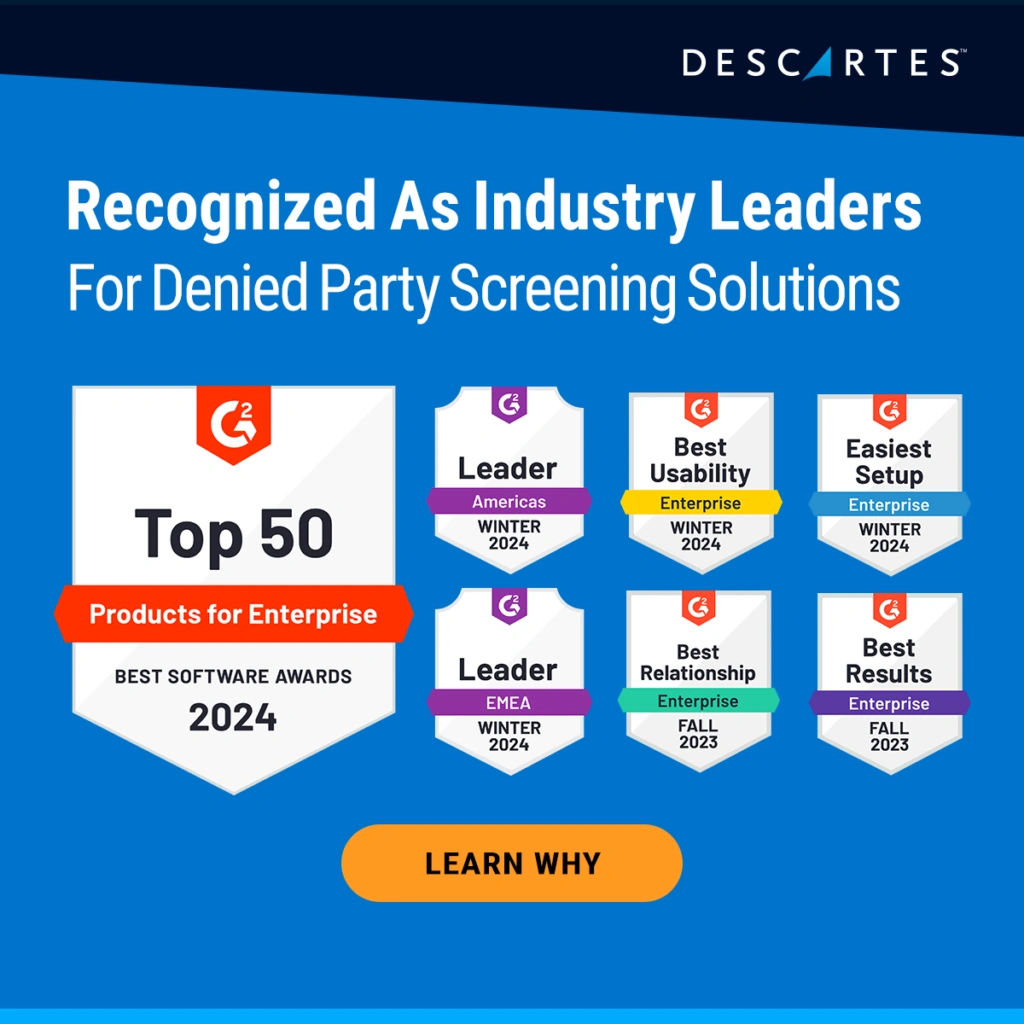There’s perhaps nothing spookier than misconceptions surrounding the many intricacies of restricted party screening, and other areas of export, trade and financial (OFAC) compliance.
This Hallowe’en, we’ve gone back to basics with a special phonics edition to help demonstrate that export compliance doesn’t have to be so tricky. In fact, armed with the right knowledge, it can also be quite a treat.
H is for Hand-carried
Goods, information and services that require export licenses still need licenses even when they are—you guessed it—hand-carried by representatives, staff or faculty abroad. In addition, screening for denied or restricted parties in advance of any travel will help ensure that anyone who may be a threat to national security, or against the U.S. policy interests, does not come into contact with the travelling controlled tech or information.
For more information about this topic, these five tips can help take the fright out of a potential hand-carried export violation.
A is for Audit
Screening for denied and restricted parties, including Specially Designated Nationals—and sanctioned and embargoed countries—is just one trick in the treat that is export, trade and OFAC compliance. There is an element of recordkeeping involved. No matter which method you use, be it manually via a spreadsheet, taking a snapshot of your screen and storing it for future use—or better yet, an online system that stores records of your screening activities in one centralized, easy-to-access place—being able to demonstrate that screening is taking place consistently, on a regular, ongoing basis, is perhaps one of the most critical areas of compliance.
The Importance of Being Audit-Ready: Proving Your Export Compliance outlines why proving due diligence is essential to any company’s export compliance plan.
L is for Lists
Denied Party, Restricted Party, Sanctioned Party, Excluded Parties (GSA), Law Enforcement, Sanctioned and Embargoed Countries, Medical—the number of U.S. and international Watch Lists is so numerous that it would fill a Hallowe’en goody bag many times over. Among these are mandatory screening lists published by the Departments of State (DDTC), Commerce (BIS), and Treasury (OFAC). These lists include Denied Persons, Designated Terrorist Organizations, Specially Designated Nationals, and many more. On top of this, many international governments and organizations also publish their own lists.
While many lists are mandatory, others relate more to specific industries. It’s important to know which lists are required in order for your organization to lawfully conduct business—and then understand what to do when you get a match from a watch list!
L is for License
Most organizations know that shipping materials across borders require some paperwork, be it shipping labels and freight forwarder waybills, to Bills of Lading, Shipper’s Letter of Instruction (SLI), Commercial and Pro Forma Invoices and more. But there exist a whole world of goods, technology and services that require licenses in one form or another in order to lawfully export. The trick is that they may not always be obvious. Exporting horses by sea, anyone?
O is for the Office of Foreign Assets Control (OFAC)
In their own words, “The Office of Foreign Assets Control (OFAC) of the US Department of the Treasury administers and enforces economic and trade sanctions based on U.S. foreign policy and national security goals against targeted foreign countries and regimes, terrorists, international narcotics traffickers, those engaged in activities related to the proliferation of weapons of mass destruction, and other threats to the national security, foreign policy or economy of the United States.” In layman’s terms, OFAC does not want you to transact with an individual or entity on an OFAC watch list. Nor do they want anyone to do business with a country facing sanctions and embargoes.
OFAC-specific watch lists include the Specially Designated Nationals (SDN) list, the Foreign Sanctions Evaders (FSE), Sectoral Sanctions Identifications (SSI), Foreign Narcotics Kingpins, and others. And unlike those who live for the fun of Hallowe’en, OFAC isn’t here for the apple bobbing. Between 2015 and 2017 alone, OFAC levied over $740 Million worth of fines—and that’s not counting other criminal convictions and jail time. Making sure that you are not doing business with anyone on OFAC and other government watch lists helps protect you and your company from said fines, and other penalties.
W is for Workflow
Though the concept of the “workflow” had its origins in manufacturing, more and more organizations are adopting—one or multiple—workflows into their daily business operations. And building export, trade, and financial compliance into those workflows is one of the best ways to accomplish the following:
Ensuring people are screening for restricted parties, generating the required export compliance documents, and keeping track of export licenses, etc., automatically, and doing it in systems already in use within the organization.
Take the case of Adafruit, whose previous manual process just wasn’t working for a fast-growing technology company. With Visual Compliance’s Integrated Screening, they were screening for denied and restricted parties directly in their custom-built eCommerce system in a matter of days.
Workflows can also exist outside of business systems—online tools that help facilitate areas within export, trade and OFAC compliance can be just as useful. A tool such as Compliance Manager Workflow, Visual Compliance’s centralized workflow application that manages the escalating, vetting and clearing of restricted party screening matches, is one example. Export Classification Workflow, an export classification tool, another.
E is for Export Control Classification Number (ECCN)
An Export Control Classification Number, or ECCN, is the five character alpha-numeric designations used on the Bureau of Industry and Security’s (BIS) Commerce Control List (CCL) to “identify dual-use items for export control purposes.” If a product is listed on the CCL, the trick is that you’ll likely need an export license for it (unless your exports qualify for a license exception).
If not associated with an ECCN, then treat, it may fall under the Export Administration Regulations (EAR99), and you might not require a license at all.
E is for Export Compliance Program (ECP)
Also commonly referred to as an Export Management and Compliance Program (EMCP), an ECP is effectively a documented and agreed-upon series of procedures that embeds export compliance throughout the organization. Think of it as an organization’s “how-to” manual on avoiding fines, and other civil and criminal penalties, that can come as a result of doing business with a denied or restricted party.
The Bureau of Industry and Security’s Export Compliance Guidelines publication is a valuable resource for those wishing to learn more about how to set up an ECP. Conversely, our article, Is Your Export Compliance Program Out of Control? Top 5 Ways to Know, has some helpful suggestions on giving existing ECPs a quick diagnostic.
N is for End User
In the phonetic sense, at least.
Knowing the ultimate end user of a good subject to export controls is a critical step towards preventing unauthorized export or re-export of said goods. It’s essentially a certification that a buyer is the final recipient of exported materials and has no intention of re-exporting the materials to anyone else. With the Departments of Commerce, State and Defense all involved in stringent end-use monitoring programs, not having a comprehensive end-use checks (EUC) process means you could be opening your organization up to potential export violations.
Our article, More Than Just an End User Statement: Best Practices for Evaluating End Users, is worth the read for anyone wishing to learn more about end user statements.


